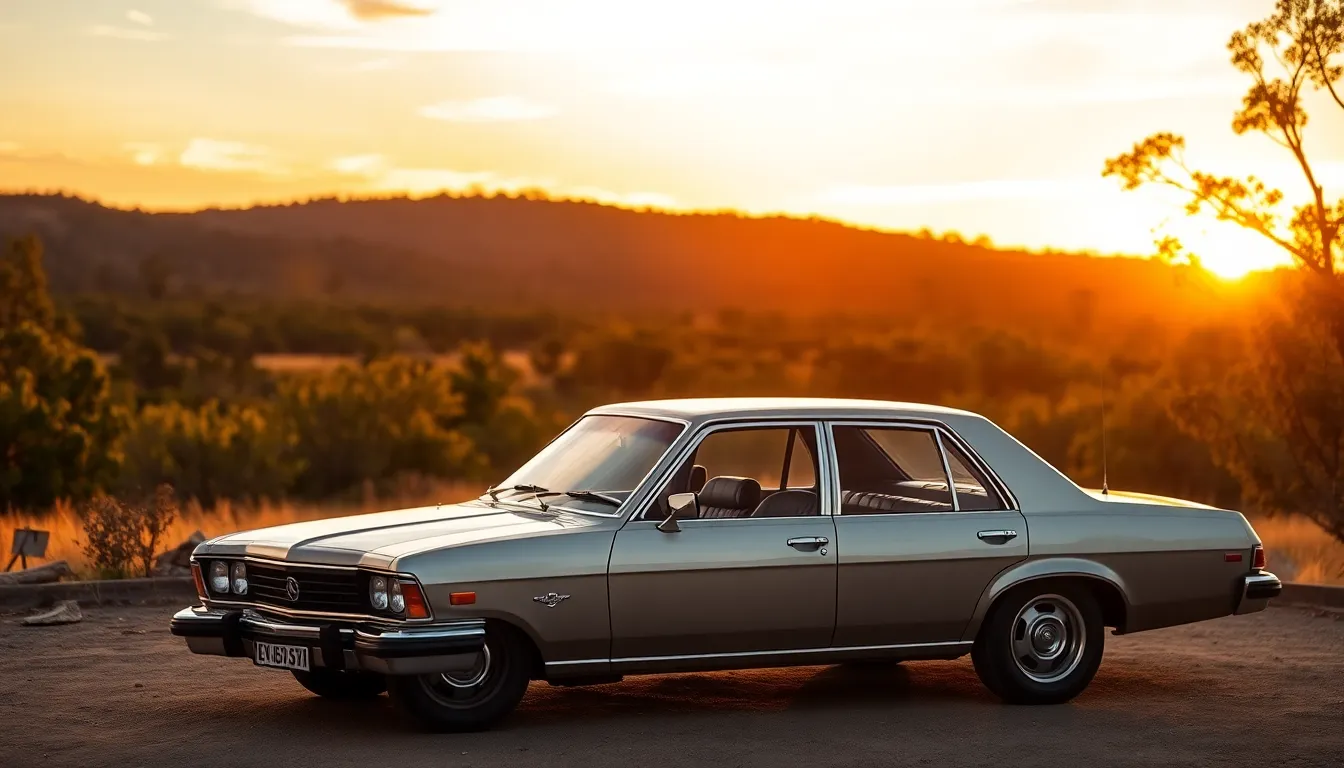Australia’s automotive legacy spans decades of innovation and engineering excellence that shaped the nation’s identity. From the iconic Holden Commodore to the rugged Ford Falcon we’ve witnessed homegrown manufacturers create vehicles perfectly suited for Australia’s unique driving conditions and diverse landscapes.
We’ll explore the rise and fall of Australia’s domestic car industry examining legendary models that became household names across the continent. These weren’t just cars – they were symbols of Australian ingenuity that competed on global stages while serving millions of families on local roads.
The story of Australian cars reveals fascinating insights into how geography climate and culture influenced automotive design. We’ll uncover why certain models achieved cult status and how international partnerships shaped the industry’s evolution before manufacturing eventually ceased in 2017.
Holden Commodore: Australia’s Beloved Family Sedan
The Holden Commodore emerged as Australia’s most cherished family sedan, capturing hearts and driveways across the continent for nearly four decades. We witnessed this remarkable vehicle evolve from a simple family car into a cultural phenomenon that defined Australian automotive excellence.
The Rise of an Automotive Icon
General Motors launched the first Commodore in 1978, marking the beginning of what would become Australia’s best-selling car. Engineering teams designed this sedan specifically for Australian conditions, incorporating larger cabin space and robust suspension systems to handle the country’s diverse terrain.
Sales figures consistently placed the Commodore at the top of Australian automotive charts, with over 1.7 million units sold during its production run. Manufacturing took place at Holden’s Elizabeth plant in South Australia, where skilled workers assembled each vehicle with meticulous attention to detail.
Families embraced the Commodore’s spacious interior and reliable performance, making it the go-to choice for long-distance travel across Australia’s vast landscapes. Design evolution occurred through six distinct generations, each incorporating advanced technology while maintaining the model’s signature Australian character.
Performance Variants and Racing Heritage
HSV (Holden Special Vehicles) transformed the humble family sedan into a high-performance machine that dominated Australian racing circuits. Performance variants like the SS, HSV ClubSport, and GTS delivered exceptional power outputs ranging from 270 to 430 horsepower.
Racing success came through the Australian Touring Car Championship, where Commodores secured multiple championships and became synonymous with motorsport excellence. Track victories numbered in the hundreds, establishing the model’s reputation as both a family vehicle and a serious performance machine.
| Model Variant | Power Output | Notable Achievement |
|---|---|---|
| SS | 270-362 HP | Best-selling performance sedan |
| HSV ClubSport | 317-430 HP | Multiple ATCC wins |
| GTS | 430-577 HP | Fastest production Commodore |
Street versions of these performance models allowed everyday drivers to experience racing-inspired engineering, creating a unique connection between motorsport and mainstream automotive culture.
The End of an Era in 2017
Production ceased on October 20, 2017, marking the end of Australian automotive manufacturing and the conclusion of the Commodore’s remarkable journey. We witnessed thousands of workers bid farewell to the Elizabeth plant as the final VF Series II rolled off the production line.
Economic pressures and changing market preferences led to this difficult decision, even though the model’s continued popularity among Australian consumers. Government subsidies had supported local manufacturing for decades, but global competition and rising production costs made continuation unsustainable.
Legacy continues through the imported ZB Commodore, though enthusiasts and automotive historians recognize the profound cultural impact of the locally-manufactured versions. Collector values for classic Commodores have steadily increased, reflecting the deep emotional connection Australians maintain with this automotive icon.
Ford Falcon: The Blue Oval’s Australian Legend
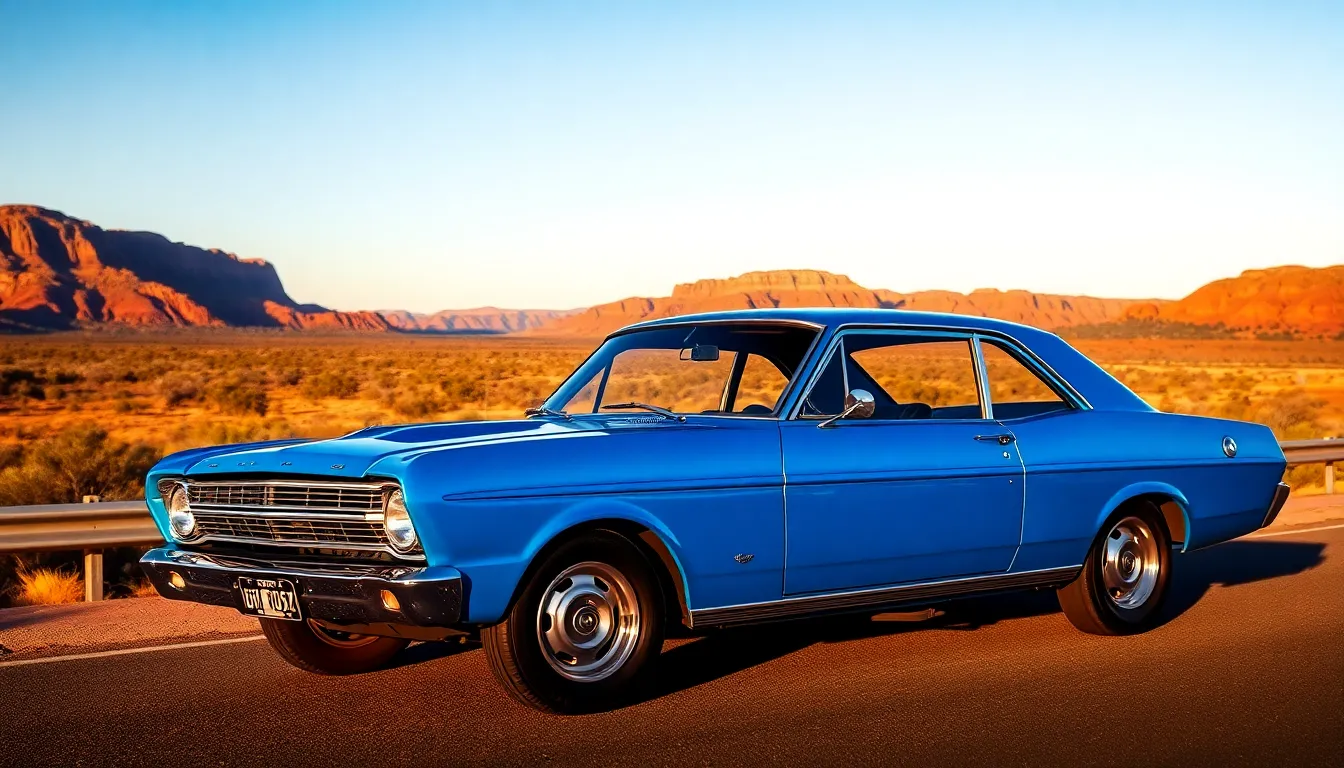
While Holden captured hearts with the Commodore, Ford’s Falcon carved its own legendary path through Australian automotive history. We witnessed this remarkable journey span over five decades of continuous production.
Six Decades of Australian Manufacturing
Ford Australia launched the Falcon in 1960 as the company’s answer to harsh Australian driving conditions. We saw Ford establish dedicated manufacturing facilities in Broadmeadows and Geelong to produce vehicles specifically engineered for local terrain. Engineers developed unique suspension systems and cooling answers that could handle Australia’s extreme temperatures and vast distances.
Production statistics reveal the Falcon’s immense popularity throughout its lifespan:
| Generation | Production Years | Units Produced | Key Features |
|---|---|---|---|
| XK-XP | 1960-1966 | 385,000 | First Australian-built Ford |
| XR-XY | 1966-1972 | 448,000 | Legendary GT performance models |
| XA-XC | 1972-1979 | 621,000 | Hardtop and coupe variants |
| XD-XF | 1979-1988 | 815,000 | Fuel injection introduction |
| EA-EL | 1988-1996 | 742,000 | Modern aerodynamic design |
| AU-FG X | 1998-2016 | 456,000 | Final generation models |
Manufacturing reached its peak during the 1970s when Ford produced over 100,000 Falcons annually. We observed how the company adapted production methods to incorporate advanced safety features and emission controls while maintaining the rugged reliability Australian drivers demanded.
XR6 and XR8: High-Performance Variants
Ford Performance Vehicles (FPV) transformed the Falcon platform into serious performance machines through the XR6 and XR8 lineup. We watched these variants become the backbone of Ford’s motorsport success and enthusiast culture.
XR6 models featured turbocharged inline-six engines producing up to 362 horsepower in later iterations. Engineers tuned these powerplants specifically for Australian conditions, delivering exceptional torque curves suited for highway cruising and spirited driving. Track testing showed XR6 Turbos achieving 0-100 km/h acceleration times of just 5.2 seconds.
XR8 variants housed legendary V8 engines including the 5.4-liter Boss and supercharged Miami units. We documented power outputs ranging from 290 horsepower in early models to 470 horsepower in final FPV GT variants. Racing homologation requirements led to limited-edition models like the GT-HO Phase III, which achieved mythical status among collectors.
Performance upgrades extended beyond engine modifications to include sport-tuned suspension systems, Brembo braking packages, and aerodynamic enhancements. We noted how these variants dominated V8 Supercars championships, securing multiple Bathurst 1000 victories between 1967 and 2015.
Final Curtain Call and Legacy
Ford announced the end of Australian Falcon production in May 2013, citing declining sales and manufacturing costs. We witnessed emotional scenes as the final XR6 rolled off the Broadmeadows assembly line on October 7, 2016, ending 56 years of continuous production.
Total production numbers reached approximately 3.5 million units across all variants and generations. We observed how this figure positioned the Falcon as one of Australia’s most successful automotive programs, rivaling even the Holden Commodore’s sales achievements.
Market values for classic Falcon models continue rising, particularly for rare GT and Cobra variants. We track auction results showing pristine XY GT-HO Phase III examples selling for over $1 million, establishing them among Australia’s most valuable collector cars. Contemporary XR6 Turbo and XR8 models maintain strong resale values as enthusiasts recognize their significance as the final chapter of Australian Ford performance.
Police departments across Australia operated thousands of Falcon patrol cars, with many agencies expressing reluctance to transition to imported alternatives. We documented how this professional endorsement reinforced the Falcon’s reputation for durability and performance under demanding conditions.
HSV (Holden Special Vehicles): Supercharged Australian Muscle
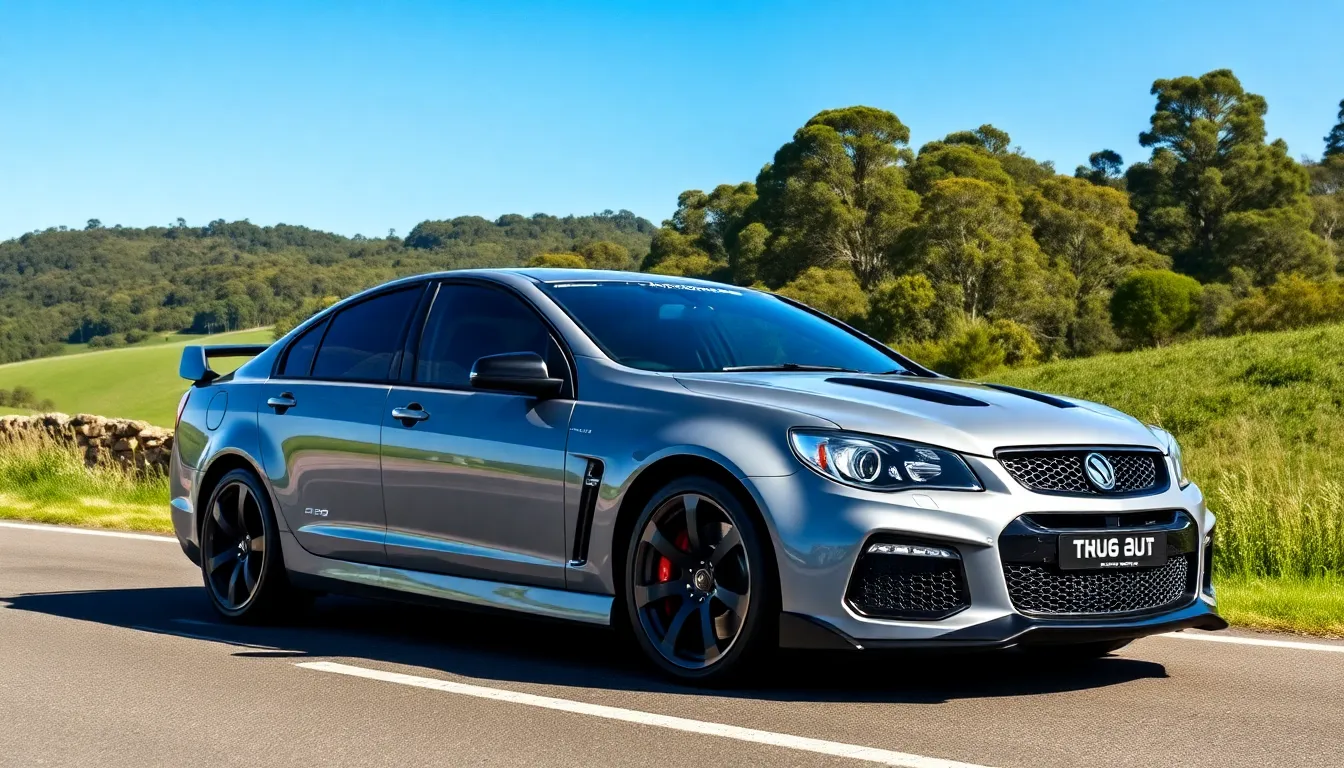
Building on the success of Holden’s Commodore platform, HSV emerged as Australia’s premier performance car manufacturer, transforming family sedans into supercharged muscle machines. Founded in 1987 as a joint venture between Holden and Tom Walkinshaw Racing, HSV created hand-built performance vehicles that became legends of Australian automotive engineering.
Hand-Built Performance Machines
Every HSV vehicle underwent meticulous hand-assembly at the Clayton facility in Melbourne, where skilled craftsmen transformed standard Commodores into high-performance machines. Technicians installed supercharged V8 engines, upgraded suspension systems, and enhanced braking components to create vehicles capable of extraordinary performance. The hand-built process ensured each HSV met exacting quality standards, with production numbers remaining deliberately limited to maintain exclusivity.
Engineers at HSV developed signature modifications including flared wheel arches, aggressive body kits, and distinctive badging that set these vehicles apart from standard Holdens. Performance upgrades included Brembo brake systems, sports-tuned exhaust systems, and specially calibrated transmissions designed to handle increased power output. The attention to detail extended to interior appointments, with leather-trimmed seats, aluminum pedals, and HSV-branded instrumentation creating a premium driving environment.
Clubsport and Maloo: Standout Models
The HSV Clubsport represented the pinnacle of Australian four-door performance, combining family practicality with genuine sports car capability. Powered by supercharged LS engines producing up to 435 horsepower, the Clubsport achieved 0-60 mph acceleration in just 4.8 seconds while maintaining four-door practicality. Production ran from 1988 to 2017, with each generation incorporating advanced technologies like Launch Control and Electronic Stability Program.
Australia’s unique automotive industry produced the HSV Maloo, the industry’s fastest production utility vehicle that captured global attention. Based on the Commodore Ute platform, the Maloo featured the same supercharged V8 engines as the Clubsport but in a pickup truck configuration that appealed to Australian buyers. Performance figures included a top speed of 168 mph and quarter-mile times under 13 seconds, making it faster than many dedicated sports cars of its era.
Limited Edition Collectibles
HSV created many limited edition models that have become highly sought-after collectibles, with production numbers often restricted to fewer than 500 units. The GTS-R W1, released as HSV’s final model in 2017, featured a 635-horsepower supercharged V8 and represented the most powerful car ever built in Australia. Only 275 W1 models were produced, making them instantly collectable with values exceeding $200,000 at auction.
Special editions like the Senator Signature, GTO Coupe, and 25th Anniversary models featured unique color schemes, interior appointments, and performance upgrades that distinguished them from regular production vehicles. These limited runs often celebrated milestones in HSV’s history or honored racing achievements, with many incorporating aerodynamic enhancements and weight reduction measures. Current market values for pristine examples continue to appreciate, with rare models like the GTS 25th Anniversary commanding prices above their original retail cost.
FPV (Ford Performance Vehicles): Blue Oval’s Answer to HSV
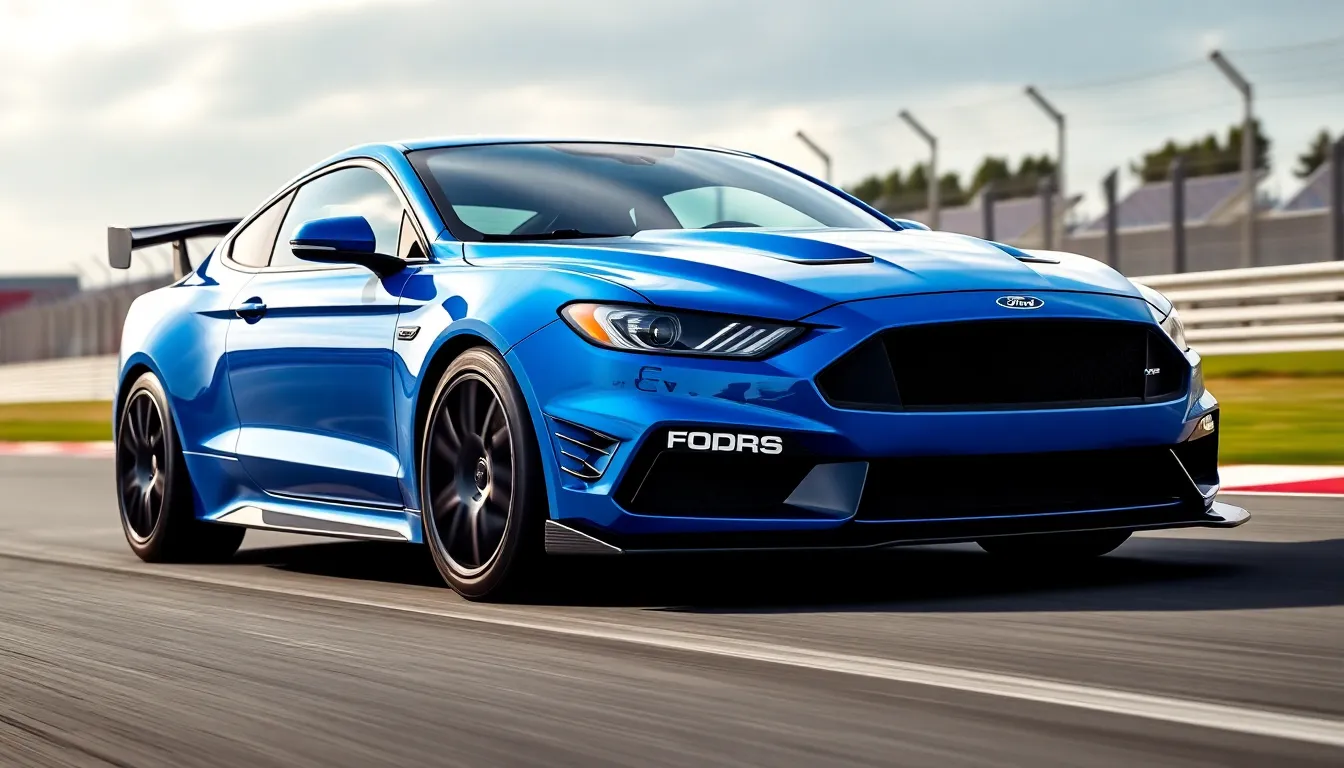
Ford’s response to HSV’s dominance came through FPV, a dedicated performance division that transformed the humble Falcon into a track-ready predator. We witnessed Ford establish this specialized unit to compete directly with Holden’s high-performance offerings.
Track-Focused Engineering
Performance engineering at FPV centered on creating vehicles that excelled both on public roads and racing circuits. Engineers developed sophisticated suspension systems using Bilstein dampers and upgraded anti-roll bars to improve handling dynamics. Advanced braking systems featured Brembo calipers and larger disc rotors to handle the increased stopping power demands.
Aerodynamic enhancements played a crucial role in FPV’s engineering philosophy. Body kits included front splitters, rear spoilers, and side skirts designed through wind tunnel testing to reduce lift and improve stability at high speeds. Engine tuning programs extracted maximum power from Ford’s naturally aspirated and turbocharged powerplants while maintaining reliability for everyday driving.
Weight reduction strategies helped FPV vehicles achieve superior power-to-weight ratios. Lightweight alloy wheels, carbon fiber components, and stripped interior options reduced overall vehicle mass. Performance tires from Michelin and Pirelli provided the grip necessary to translate engine power into forward momentum effectively.
GT and Pursuit Models
GT models represented FPV’s flagship performance vehicles, featuring the most powerful engines in Ford’s Australian lineup. The FPV GT packed a supercharged 5.0-liter V8 engine producing 335 kW (449 horsepower) and 570 Nm of torque. Limited production runs of 500 units made these vehicles instant collectibles among Ford enthusiasts.
Pursuit models targeted law enforcement agencies with specialized police package modifications. These vehicles included reinforced chassis components, upgraded cooling systems, and modified electrical systems to support emergency equipment. Heavy-duty alternators and transmission coolers ensured reliable operation during extended high-speed pursuits.
Special edition variants like the GT-P and GT-E pushed performance boundaries even further. The GT-P featured track-focused suspension tuning and lightweight racing seats, while the GT-E incorporated enhanced aerodynamics and performance data logging systems. Production numbers remained limited, with most special editions seeing fewer than 300 units manufactured.
Racing Technology Transfer
Motorsport developments directly influenced FPV’s road car engineering through extensive technology transfer programs. Racing-derived suspension geometry and damping rates from Ford’s V8 Supercar program found their way into production FPV vehicles. Engine mapping strategies developed on race tracks improved both performance and fuel efficiency in street cars.
Data acquisition systems from Ford’s racing division helped optimize FPV vehicle performance. Telemetry data collected during competitive racing events informed suspension tuning, aerodynamic modifications, and engine calibration changes. Track testing at venues like Phillip Island and Bathurst validated performance improvements before implementation in production vehicles.
Collaboration with racing teams provided real-industry testing environments for FPV technologies. Ford Performance Racing (FPR) served as the primary testing ground for components later used in road cars. Driver feedback from professional racing pilots helped refine steering feel, braking performance, and overall vehicle dynamics to create the ultimate driving experience for FPV customers.
Holden Monaro: The Coupe That Conquered America
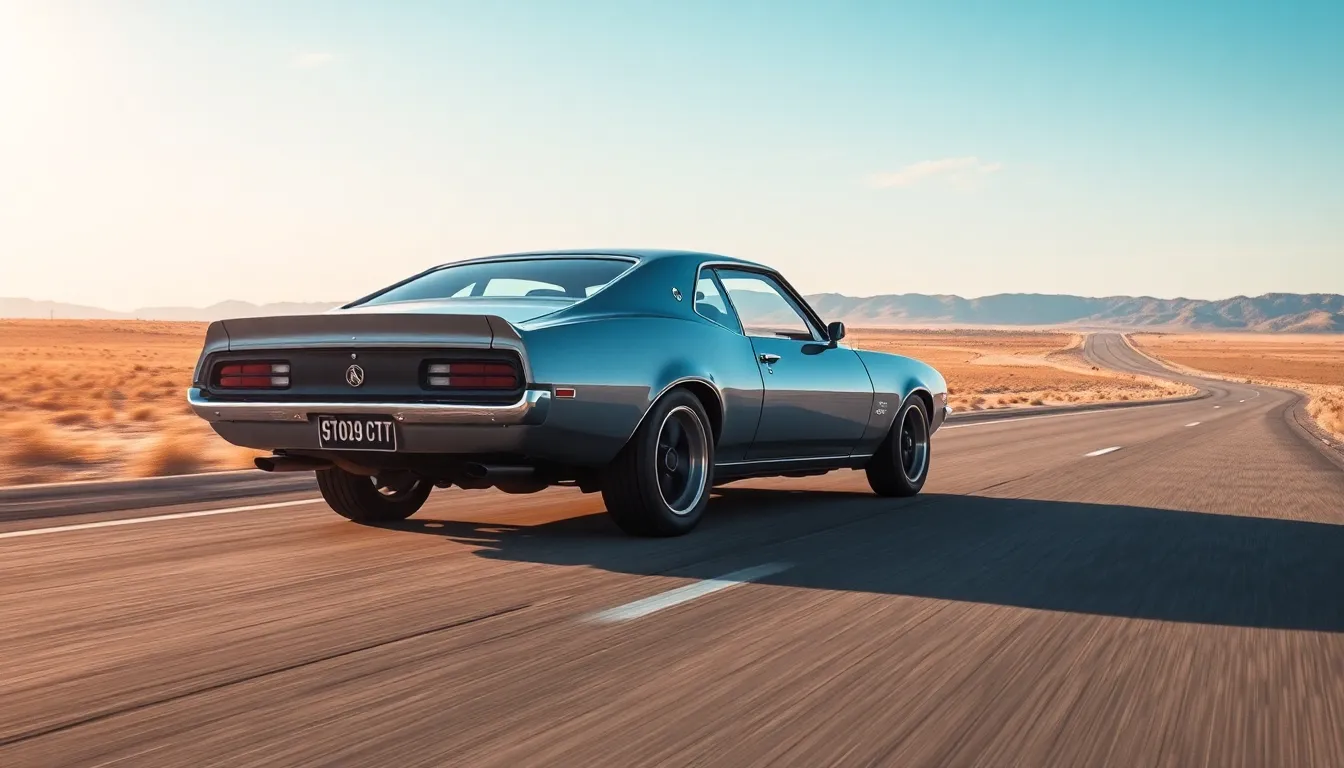
We witnessed something extraordinary when Holden’s most ambitious coupe crossed the Pacific to capture American hearts. The Monaro represented Australia’s boldest automotive export, proving that local engineering excellence could compete on the industry’s largest stage.
Australian Design Meets Global Appeal
Engineering excellence defined the Monaro from its conception, featuring a distinctive fastback silhouette that combined aggressive styling with aerodynamic efficiency. Holden’s design team crafted a vehicle that embodied pure Australian muscle car DNA while maintaining international appeal. Performance specifications included a naturally aspirated 5.7-liter V8 engine producing 300 horsepower, coupled with advanced independent rear suspension that delivered exceptional handling dynamics.
Manufacturing precision ensured each Monaro met stringent quality standards at Holden’s Elizabeth plant in South Australia. Engineers incorporated lightweight aluminum components throughout the chassis structure, reducing overall weight by 120 kilograms compared to contemporary sedans. Interior appointments featured premium leather upholstery and sophisticated instrumentation that rivaled European sports coupes.
Market positioning targeted enthusiasts seeking authentic rear-wheel-drive performance in an increasingly front-wheel-drive industry. Holden’s designers created distinctive styling cues including quad exhaust outlets and aggressive front air intakes that became instantly recognizable signatures. Safety features incorporated advanced airbag systems and electronic stability control, meeting international safety regulations while maintaining performance integrity.
Pontiac GTO Transformation
General Motors’ strategy transformed the Monaro into the Pontiac GTO for American markets, reviving one of muscle car history’s most legendary nameplates. Pontiac engineers made minimal modifications to preserve the Monaro’s authentic Australian character while meeting U.S. regulatory requirements. Importation process began in 2004 with approximately 15,728 units arriving during the first model year.
Marketing campaigns emphasized the GTO’s Australian heritage as a unique selling proposition in the crowded American performance car segment. Pontiac positioned the vehicle as “The Goat” reborn, connecting with baby boomer nostalgia while attracting younger enthusiasts. Performance upgrades for the American market included a more powerful 6.0-liter LS2 V8 engine producing 400 horsepower in later model years.
Reception challenges initially emerged from American consumers expecting more aggressive styling reminiscent of the original 1960s GTO. Critics praised the vehicle’s refined handling and build quality while questioning its subtle appearance compared to domestic competitors like the Mustang. Sales figures reached 40,808 total units across three model years before discontinuation in 2006.
Limited Production Run Success
Exclusivity factors made both the Monaro and GTO highly sought after vehicles among collectors and performance enthusiasts. Holden produced only 27,572 Monaros between 2001 and 2005, with export models representing approximately half of total production. Collector market values have steadily increased, with pristine examples commanding prices exceeding $40,000 in today’s market.
Performance variants included the limited edition CV8-R, featuring enhanced suspension tuning and exclusive interior trim packages. Racing homologation requirements resulted in special models like the CV8-Z, which incorporated aerodynamic modifications and weight reduction measures. Production statistics show that manual transmission models represent only 30% of total Monaro production, making them particularly desirable among enthusiasts.
Legacy impact established the Monaro as proof that Australian automotive engineering could successfully compete in global markets. Classic car auctions regularly feature well-maintained examples, with rare color combinations and low-mileage vehicles achieving premium prices. Cultural significance endures through dedicated owner clubs and restoration specialists who maintain these vehicles as rolling ambassadors of Australian automotive excellence.
Ford Territory: Australia’s First Homegrown SUV
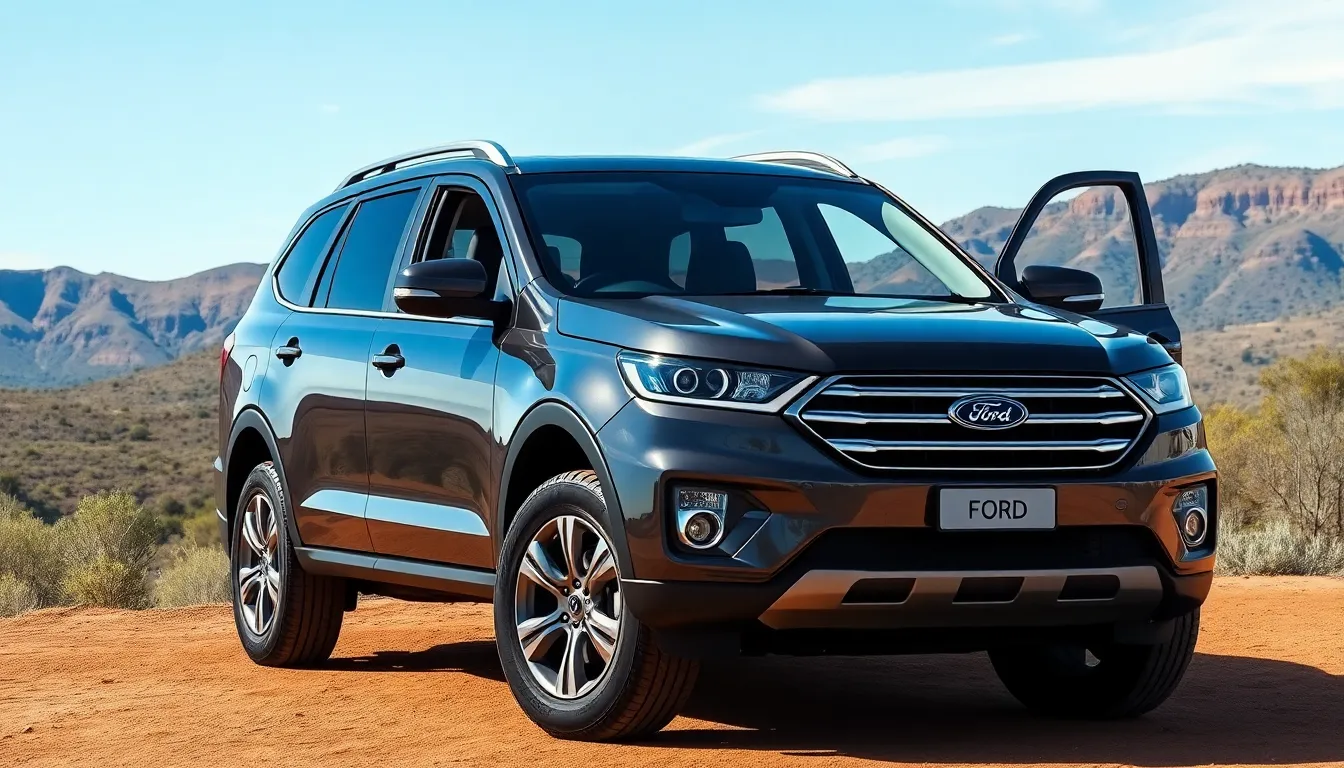
Ford Territory marked a revolutionary moment in Australian automotive history when it debuted in 2004 as the nation’s first locally designed and manufactured SUV. We witnessed Ford Australia’s bold move to capture the growing SUV market with a vehicle specifically engineered for Australian families and driving conditions.
Pioneering the Australian SUV Market
Territory emerged as Australia’s answer to the SUV boom that was sweeping global markets in the early 2000s. Ford’s Broadmeadows facility underwent important expansion to accommodate Territory production, representing a $500 million investment in Australian manufacturing. We saw Ford challenge established SUV imports by offering a locally made alternative that understood Australian terrain and family needs.
Market research revealed that Australian families wanted more space and versatility than traditional sedans provided, yet they still demanded the ride quality and handling characteristics of a passenger car. Territory filled this gap perfectly with its unibody construction derived from the Falcon platform. Sales figures demonstrated immediate success with over 20,000 units sold in the first year alone.
Competition from imported SUVs like the Honda CR-V and Toyota RAV4 intensified throughout Territory’s production run. Territory maintained its position by offering superior interior space and towing capacity compared to these smaller rivals. We observed how Ford’s local manufacturing advantage allowed for rapid responses to customer feedback and market demands.
Turbo Technology and All-Wheel Drive
Territory introduced Australians to Ford’s advanced turbo technology through its 2.7-liter V6 engine option, delivering impressive performance while maintaining reasonable fuel consumption. This turbocharged powerplant produced 272 horsepower and 378 lb-ft of torque, providing excellent acceleration for family hauling duties. We noticed how this engine technology positioned Territory ahead of naturally aspirated competitors in terms of power delivery and efficiency.
All-wheel drive systems became Territory’s signature feature, offering Australian families confidence across diverse terrain from city streets to country roads. Ford’s intelligent AWD system automatically distributed power between front and rear wheels based on driving conditions and wheel slip detection. Traction control integration enhanced the system’s effectiveness on loose surfaces and during adverse weather conditions.
Electronic stability control worked along with the AWD system to provide maximum safety and handling predictability. Territory’s ground clearance of 200mm combined with its AWD capability made it suitable for light off-road adventures that Australian families often encountered. We saw how these technical features distinguished Territory from front-wheel-drive competitors and two-wheel-drive alternatives.
Family-Focused Design Philosophy
Territory’s interior design prioritized Australian family requirements with three rows of seating accommodating up to seven passengers. Ford’s research into Australian family travel patterns influenced the vehicle’s spacious cabin dimensions and flexible seating arrangements. We observed how Territory’s second and third-row seats could be folded flat to create an enormous cargo area measuring over 2,000 liters.
Safety became a paramount concern in Territory’s development, earning it a five-star ANCAP rating upon release. Standard safety features included front and side airbags, electronic brakeforce distribution, and brake assist technology. Child seat anchor points throughout the cabin reflected Ford’s understanding of Australian family safety priorities.
Storage answers throughout Territory’s cabin addressed real-industry family needs with multiple cup holders, door pockets, and overhead compartments. Air conditioning vents in all three rows ensured passenger comfort during Australia’s hot summers and long-distance family trips. We noticed how Territory’s design team consulted extensively with Australian families during the development process to ensure practical functionality matched lifestyle requirements.
Classic Australian Muscle Cars of the 1970s
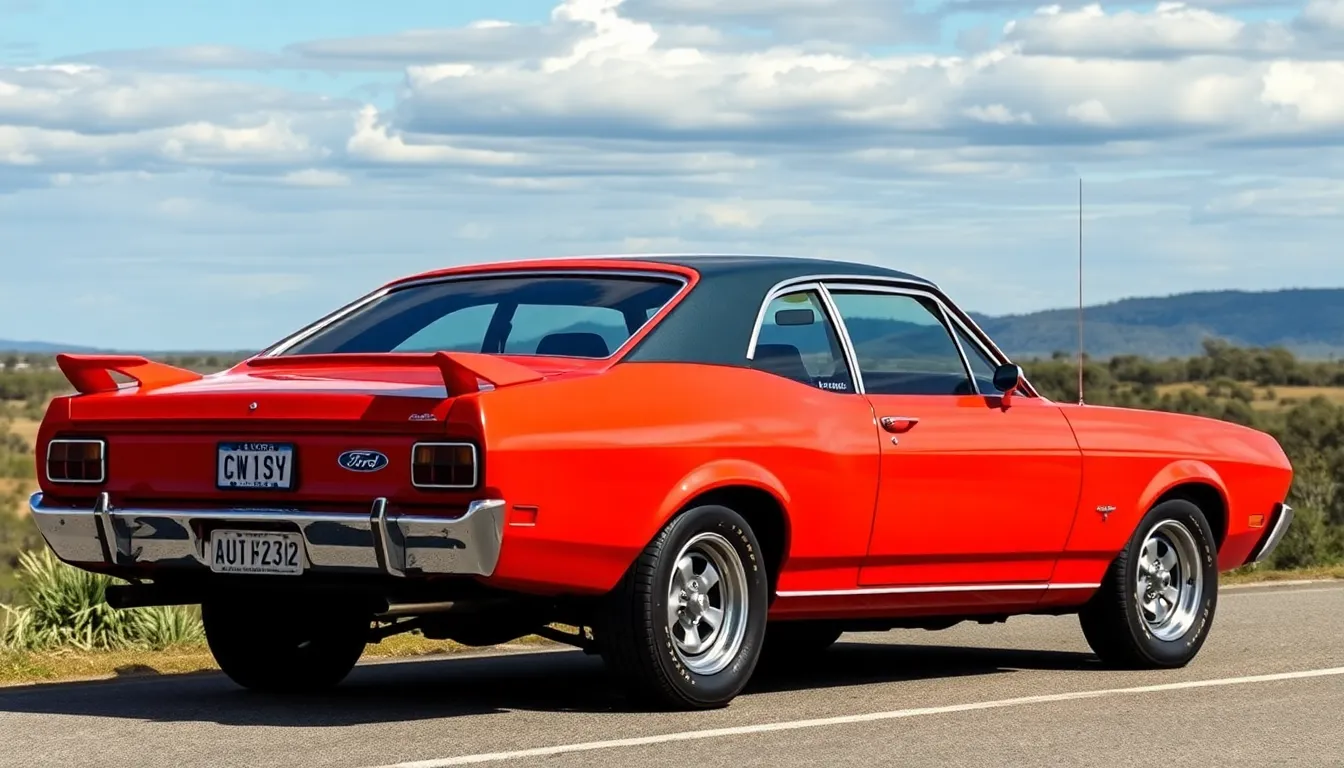
The 1970s represented the golden age of Australian muscle cars, when local manufacturers pushed performance boundaries to create legendary vehicles. These iconic machines combined raw power with Australian engineering excellence, establishing themselves as the most coveted classic cars in the nation’s automotive history.
Ford Falcon GTHO Phase III
Ford’s GTHO Phase III emerged in 1971 as Australia’s ultimate street machine, featuring a hand-built 351 cubic inch Cleveland V8 engine that produced 300 horsepower. Racing technology from Bathurst victories directly influenced this model’s development, with aerodynamic improvements including a distinctive rear spoiler and front air dam. Production numbers remained extremely limited, with only 300 units manufactured between May and November 1971.
Performance figures for the Phase III were staggering for its era, achieving 0-60 mph acceleration in just 6.1 seconds and reaching a top speed of 141 mph. Special modifications included a ram air induction system, four-speed manual transmission, and competition-grade suspension components borrowed from Ford’s racing program. Weight reduction measures eliminated unnecessary trim pieces while maintaining the Falcon’s practical four-door configuration.
Market values for surviving Phase III models have reached astronomical heights, with pristine examples selling for over $1.2 million at Australian auctions. Authenticity verification remains crucial, as matching numbers and original documentation significantly impact collector pricing. Racing heritage continues to drive demand, particularly for models with documented competition history or celebrity ownership.
Holden Torana A9X
Holden’s Torana A9X arrived in 1977 as a homologation special designed specifically for touring car racing, producing only 33 road-going examples. Engineering focused on weight reduction and aerodynamic efficiency, featuring flared wheel arches, a distinctive rear spoiler, and lightweight aluminum components throughout the drivetrain. The naturally aspirated 308 cubic inch V8 engine delivered 240 horsepower through a close-ratio four-speed manual transmission.
Motorsport dominance defined the A9X legacy, with Peter Brock’s victories at Bathurst cementing its legendary status in Australian racing history. Suspension modifications included heavy-duty springs, adjustable shock absorbers, and anti-roll bars calibrated for track performance. Interior appointments remained spartan, with bucket seats, a roll cage, and minimal sound deadening to achieve competition weight targets.
Collector interest in the A9X has intensified dramatically, with auction prices exceeding $500,000 for documented original examples. Verification challenges persist due to the model’s racing heritage, as some competition cars received road registration after their racing careers ended. Documentation from Holden’s archives becomes essential for establishing provenance and original specifications.
Chrysler Valiant Charger R/T
Chrysler’s Valiant Charger R/T debuted in 1971 as Australia’s answer to American muscle cars, featuring a distinctive fastback design and powerful Hemi six-cylinder engine options. Engineering priorities emphasized straight-line performance, with the E49 variant producing 302 horsepower from its triple-carburetor 265 cubic inch inline-six powerplant. Production spanned from 1971 to 1978, with R/T models representing the performance pinnacle of the Charger lineup.
Track pack options transformed the R/T into a formidable racing machine, incorporating competition-tuned suspension, limited-slip differential, and heavy-duty cooling systems. Aesthetic modifications included bold racing stripes, functional hood scoops, and aggressive wheel flare extensions that accommodated wider performance tires. Interior upgrades featured high-back bucket seats, a center console, and comprehensive instrumentation including tachometer and oil pressure gauges.
Contemporary road tests praised the Charger R/T’s acceleration capabilities, with E49 models achieving quarter-mile times under 14 seconds. Racing success at Bathurst and other Australian circuits validated the model’s performance credentials against Ford and Holden competitors. Restoration interest has grown significantly, with original E49 examples commanding premium prices due to their rarity and documented performance heritage.
Modern Australian Supercars Championship Vehicles
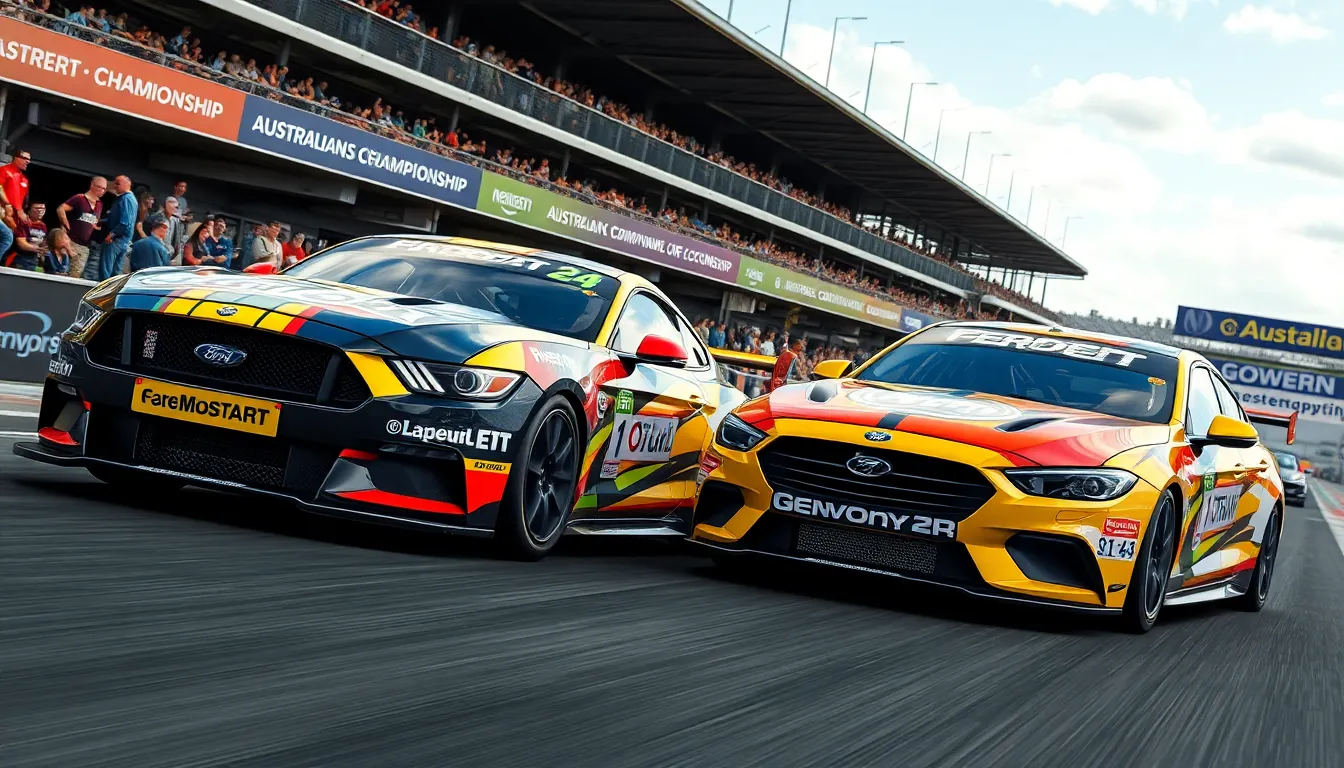
Australia’s racing DNA continues to define automotive excellence through the Supercars Championship, where cutting-edge technology meets raw performance on the track.
V8 Supercars Racing Heritage
Racing technology drives Australian automotive innovation through the Supercars Championship, where manufacturers test their engineering prowess against harsh conditions. Holden Commodore ZB models dominated the series with advanced aerodynamics and precision-tuned V8 engines producing over 635 horsepower. Ford Mustang GT introduced American muscle to Australian circuits in 2019, featuring sophisticated traction control systems and carbon fiber bodywork.
Track-proven engineering translates directly from championship vehicles to road cars, creating a legacy of performance excellence. Supercars teams develop cutting-edge suspension technologies, advanced fuel injection systems, and lightweight materials that eventually appear in production models. Championship regulations ensure manufacturers invest heavily in research and development, pushing boundaries in aerodynamics, engine efficiency, and safety systems.
Motorsport heritage connects modern Supercars to Australia’s legendary racing history, maintaining traditions established by the Falcon and Commodore eras. Current championship vehicles honor classic liveries while incorporating modern safety features like carbon fiber roll cages and advanced fire suppression systems. Professional drivers like Shane van Gisbergen and Scott McLaughlin have elevated the sport’s profile, attracting international attention to Australian racing technology.
Manufacturer Competition and Innovation
Fierce competition between Ford and Holden has driven technological advancement in the Supercars Championship, with each manufacturer investing millions in development programs. Ford’s Mustang GT features a 5.0-liter Coyote V8 engine with advanced direct injection and variable cam timing systems. Holden’s Commodore ZB utilizes a 6.2-liter LS3 V8 with sophisticated engine management systems and aerodynamic packages developed in wind tunnels.
Engineering excellence emerges from the strict technical regulations that govern Supercars construction, ensuring fair competition while promoting innovation. Teams must balance power delivery, aerodynamic efficiency, and weight distribution within precise specifications that challenge traditional automotive design principles. Modern Supercars incorporate advanced data acquisition systems, telemetry packages, and real-time performance monitoring that rivals Formula 1 technology.
Manufacturer involvement extends beyond simple badge engineering to comprehensive development programs that benefit both racing and road car divisions. Ford Australia’s collaboration with American engineering teams brings global expertise to local racing programs. Holden’s partnership with GM Racing ensures access to cutting-edge V8 technology and performance optimization techniques developed across multiple racing series.
Street-Legal Homologation Specials
Limited production models bridge the gap between championship racers and road-legal vehicles, offering enthusiasts access to genuine racing technology. HSV’s GTSR W1 represented the pinnacle of Australian performance engineering, featuring a supercharged 6.2-liter LSA V8 producing 636 horsepower and hand-assembled construction techniques. Ford’s Falcon FG X Sprint became the final high-performance sedan produced in Australia, incorporating racing-derived suspension tuning and aerodynamic enhancements.
Homologation requirements ensure street versions retain essential characteristics of their racing counterparts, creating authentic performance vehicles for public roads. These special editions feature racing-inspired interiors with carbon fiber trim, performance bucket seats, and specialized instrumentation packages. Production numbers remain intentionally limited, with many models restricted to fewer than 500 units to maintain exclusivity and collector appeal.
Market value for homologation specials continues climbing as collectors recognize their significance in Australian automotive history. Original HSV GTSR W1 models regularly exceed $300,000 at auction, while pristine Falcon Sprint examples command premium prices among enthusiasts. These vehicles represent the final expression of Australian manufacturing excellence, combining championship-proven technology with street-legal practicality in packages that’ll never be replicated.
The End of Australian Car Manufacturing

October 20, 2017 marked the final day of automotive production in Australia, ending a century-long manufacturing legacy. We witnessed the closure of the last remaining facility as Holden rolled its final Commodore off the production line.
Industry Closure Timeline
Ford Australia ceased local production in October 2016, shuttering manufacturing operations at its Broadmeadows and Geelong facilities after 56 years. We watched as the last Australian-built Falcon Territory rolled off the assembly line, marking the end of Ford’s commitment to local manufacturing.
Toyota Australia followed suit in October 2017, ending production at its Altona plant in Victoria. Manufacturing operations concluded after 54 years of continuous production, with the final Camry representing decades of Japanese investment in Australian automotive expertise.
Holden’s closure came just days later on October 20, 2017, when the Elizabeth plant in South Australia produced its last VF Commodore. Production statistics reveal the magnitude of this loss: over 7.6 million vehicles manufactured across all three brands since the 1940s.
| Manufacturer | Final Production Date | Years of Operation | Final Model |
|---|---|---|---|
| Ford | October 7, 2016 | 56 years | Territory |
| Toyota | October 3, 2017 | 54 years | Camry |
| Holden | October 20, 2017 | 69 years | Commodore VF |
Economic Factors and Government Decisions
Currency fluctuations severely impacted manufacturing competitiveness, with the Australian dollar’s strength making exports expensive and imports cheaper. We observed how global economic pressures made local production costs unsustainable compared to manufacturing in lower-wage countries.
Government subsidy reductions played a crucial role in the industry’s decline, with federal assistance programs gradually phased out between 2013 and 2017. Manufacturing subsidies dropped from $500 million annually to zero over this period, removing critical support for research and development programs.
Market fragmentation created additional challenges, as Australia’s relatively small market of 1.2 million annual vehicle sales couldn’t support the economies of scale required for profitable manufacturing. Competition from imported vehicles intensified as tariff protection decreased from 15% in 2005 to 5% by 2010.
Labor costs became increasingly uncompetitive, with Australian manufacturing wages significantly higher than those in Thailand, Mexico, and other emerging automotive markets. Production costs per vehicle exceeded global benchmarks by approximately 30%, making Australian exports economically unviable.
Impact on Local Communities
Direct employment losses affected approximately 40,000 workers across manufacturing plants, component suppliers, and related service industries. We documented how entire communities in Elizabeth, Broadmeadows, Geelong, and Altona faced unprecedented economic disruption.
Component supplier networks collapsed rapidly, with over 200 automotive parts manufacturers closing operations or dramatically reducing their workforce. Supply chain disruptions extended beyond automotive manufacturing, affecting steel production, plastics manufacturing, and engineering services.
Regional economic decline became evident in former automotive manufacturing centers, with unemployment rates in these areas rising above national averages. Property values in affected suburbs dropped significantly as workers relocated to find employment in other industries.
Skills migration occurred as experienced automotive engineers, technicians, and manufacturing specialists sought opportunities overseas or transitioned to different sectors. Australia lost decades of accumulated manufacturing expertise and institutional knowledge that had driven automotive innovation since the 1940s.
Conclusion
Australia’s automotive legacy stands as a testament to innovation engineering excellence and cultural identity. From the beloved Commodore to the legendary Falcon these vehicles didn’t just transport us—they became part of our national DNA.
While we’ve witnessed the end of domestic manufacturing the passion for Australian cars burns brighter than ever. Classic models continue breaking auction records and enthusiasts preserve these mechanical masterpieces for future generations.
The spirit of Australian automotive engineering lives on through our racing heritage motorsport achievements and the countless memories these vehicles created. Our cars may no longer roll off local production lines but their impact on our culture remains immeasurable.
These weren’t just machines—they were symbols of Australian ingenuity that conquered roads from the Outback to suburbia leaving an indelible mark on our automotive industry.
Frequently Asked Questions
What made the Holden Commodore so popular in Australia?
The Holden Commodore became Australia’s best-selling car due to its design specifically tailored for Australian conditions. It featured spacious interiors, robust suspension systems, and powerful engines perfect for the country’s diverse terrain. Launched in 1978, it evolved into a cultural phenomenon with over 1.7 million units sold across nearly four decades of production.
When did Australian car manufacturing officially end?
Australian car manufacturing officially ended on October 20, 2017, when Holden produced its final Commodore at the Elizabeth facility in South Australia. This marked the closure of the last remaining automotive manufacturing plant, following earlier shutdowns by Ford and Toyota, ending over 90 years of local car production.
What was special about the Ford Falcon GTHO Phase III?
The Ford Falcon GTHO Phase III is considered Australia’s ultimate muscle car from the 1970s golden age. It featured a powerful 351 cubic inch V8 engine and racing pedigree that made it legendary. Today, surviving examples are among the most valuable Australian cars, fetching over $1.2 million at auction.
How did HSV transform regular Holden vehicles?
HSV (Holden Special Vehicles) hand-built performance versions of regular Holdens, transforming family sedans into supercharged muscle machines. Founded in 1987, HSV added supercharged V8 engines, upgraded suspension, brakes, and aerodynamics. Limited edition models like the GTS-R W1 now command over $200,000 at auction due to their exclusivity and performance.
What was unique about the Ford Territory SUV?
The Ford Territory was Australia’s first locally designed and manufactured SUV, debuting in 2004. It was specifically engineered for Australian families and driving conditions, featuring three rows of seating, advanced turbo technology, and all-wheel drive systems. The Territory successfully captured the growing SUV market with locally-made alternatives to imports.
Why are Australian muscle cars from the 1970s so valuable today?
Australian muscle cars from the 1970s represent the golden age of local performance manufacturing. Limited production numbers, racing heritage, and the end of local manufacturing have made these vehicles highly collectible. Models like the Holden Torana A9X and Chrysler Valiant Charger R/T now command premium prices exceeding $500,000 for original examples.
What factors led to the decline of Australian car manufacturing?
The decline was caused by multiple factors including currency fluctuations making exports expensive, reduced government subsidies, market fragmentation, and intense competition from imports. Economic pressures, changing consumer preferences toward SUVs, and the high costs of local production ultimately made Australian manufacturing unsustainable, leading to approximately 40,000 job losses.
How did Australian geography influence car design?
Australia’s vast distances, harsh climate conditions, and diverse terrain significantly influenced local car design. Manufacturers developed vehicles with robust suspension systems, powerful engines, spacious interiors, and enhanced cooling systems to handle extreme temperatures and long-distance travel across challenging Australian roads and outback conditions.

